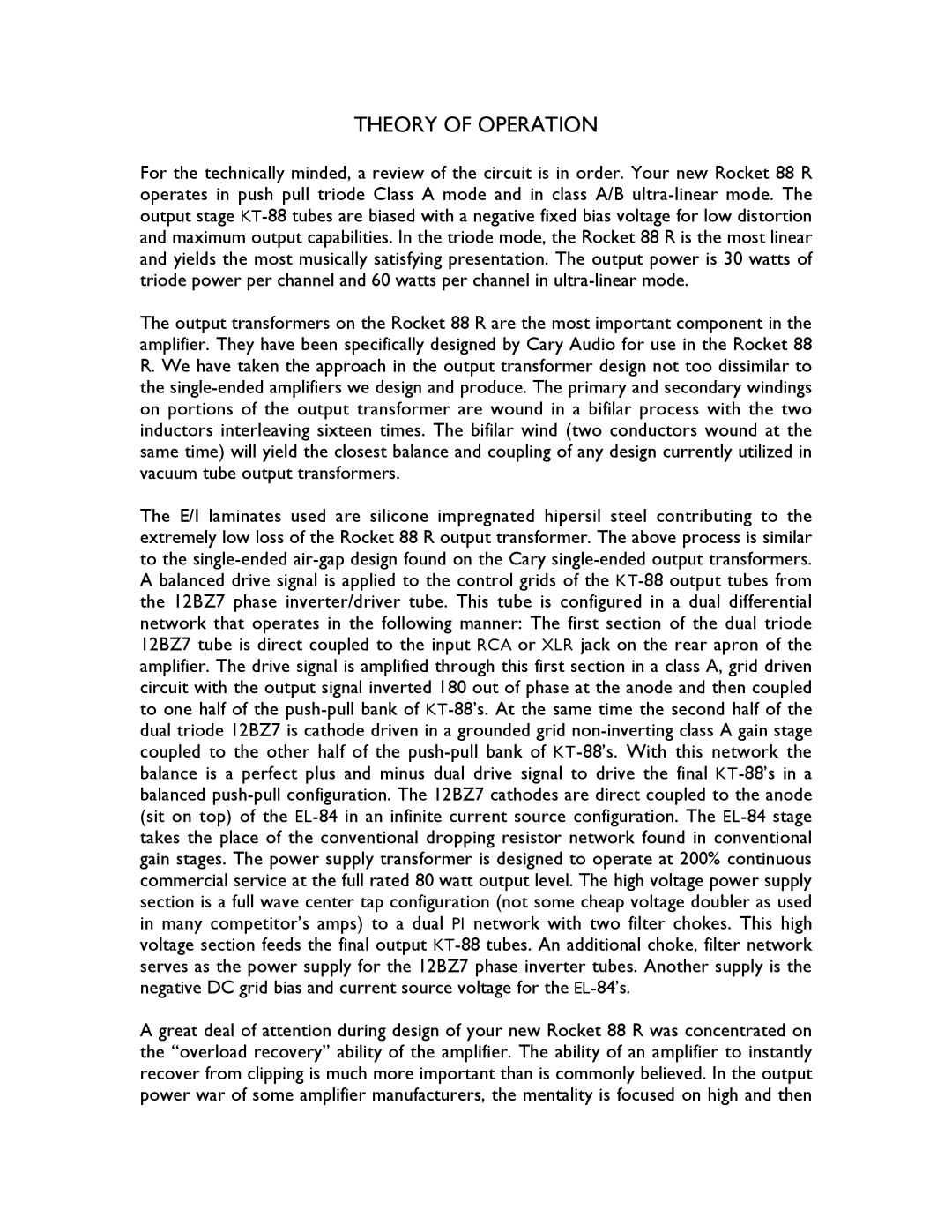CAD 808, Rocket 88 R specifications
Cary Audio Design has long been known for its high-end audio components, and the Rocket 88 R and CAD 808 amplifiers exemplify the brand’s commitment to excellence in audio performance. The Rocket 88 R is a tube amplifier that combines classic design with modern technologies, making it a popular choice among audiophiles who appreciate the warmth and character of tube sound. The CAD 808, on the other hand, is a solid-state powerhouse that brings to the table unparalleled clarity and power, providing a perfect counterpart to its tube-based sibling.The Rocket 88 R is built around a unique dual mono configuration that allows each channel to operate independently, minimizing crosstalk and enhancing stereo imaging. This amp utilizes a pair of 6550 power tubes, delivering an impressive output of up to 100 watts per channel in push-pull mode. The result is a rich, harmonic sound that brings music to life, allowing listeners to experience their favorite tracks with an emotional depth that only tubes can offer. Additionally, the Rocket 88 R features Cary Audio’s proprietary Ultra-Linear and Triode switching modes, providing audiophiles with the flexibility to choose between a more powerful, dynamic sound or the intimate, lush qualities of triode operation.
The CAD 808 amplifies the experience even further with its advanced solid-state design. Featuring robust power supply and output stages, the CAD 808 is capable of delivering a staggering 200 watts per channel, ensuring that it can drive even the most demanding speakers with ease. Incorporating state-of-the-art technologies such as high-current output transistors and a fully discreet output stage, the CAD 808 minimizes distortion and maximizes input sensitivity, resulting in crystal-clear audio reproduction. Its low negative feedback design not only enhances the overall sound quality but also improves the amplifier's transient response, providing listeners with a more dynamic and engaging listening experience.
Both amplifiers boast beautifully crafted chassis with a blend of classic aesthetics and modern functionality. The Rocket 88 R is complemented by its glowing tubes and polished finishes, while the CAD 808 showcases a sleek, contemporary look with a user-friendly interface.
In conclusion, the Cary Audio Design Rocket 88 R and CAD 808 amplifiers stand out as exceptional choices for audio enthusiasts seeking both tube warmth and solid-state clarity. With their unique technologies and remarkable design characteristics, these amplifiers promise to elevate any audio system, ensuring an unforgettable listening experience.
